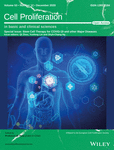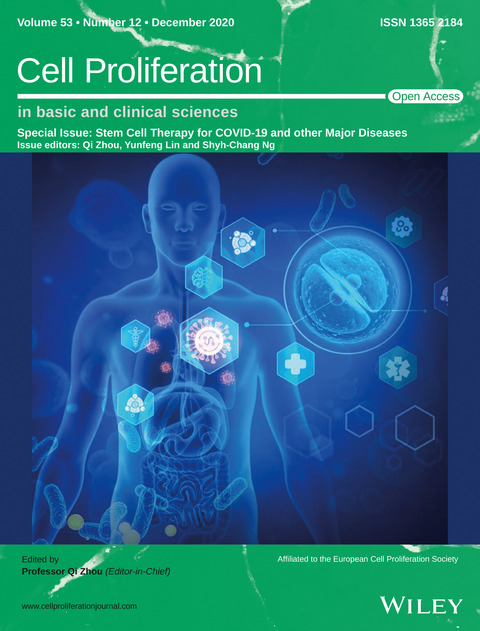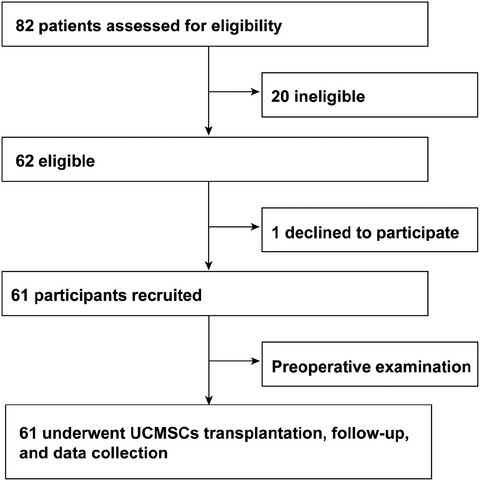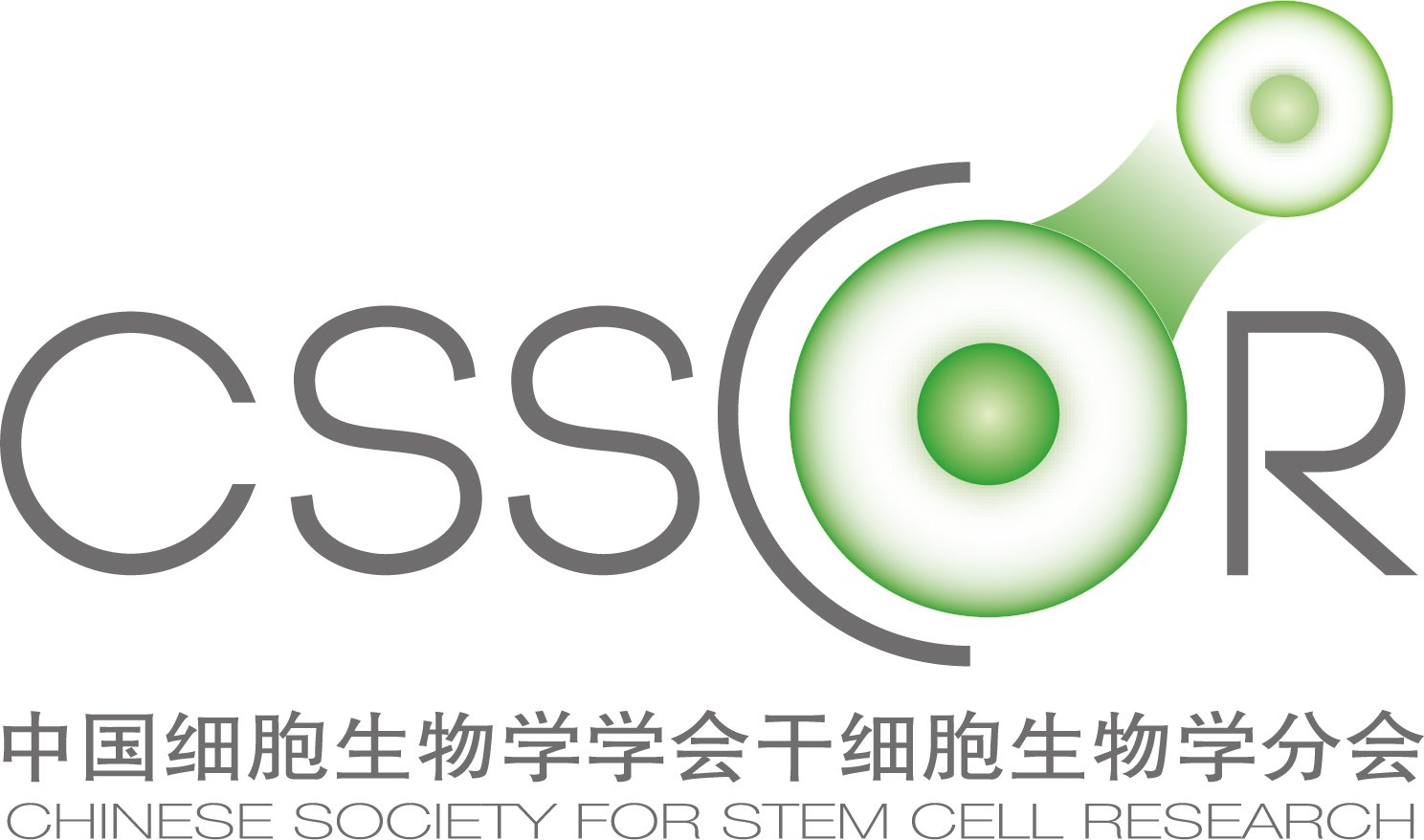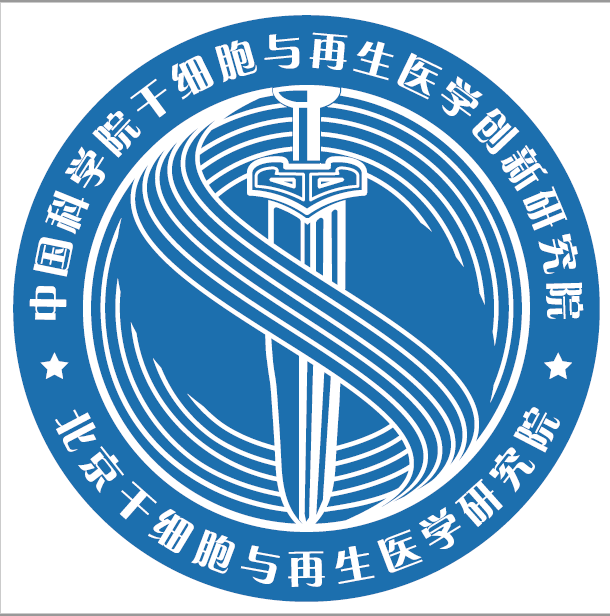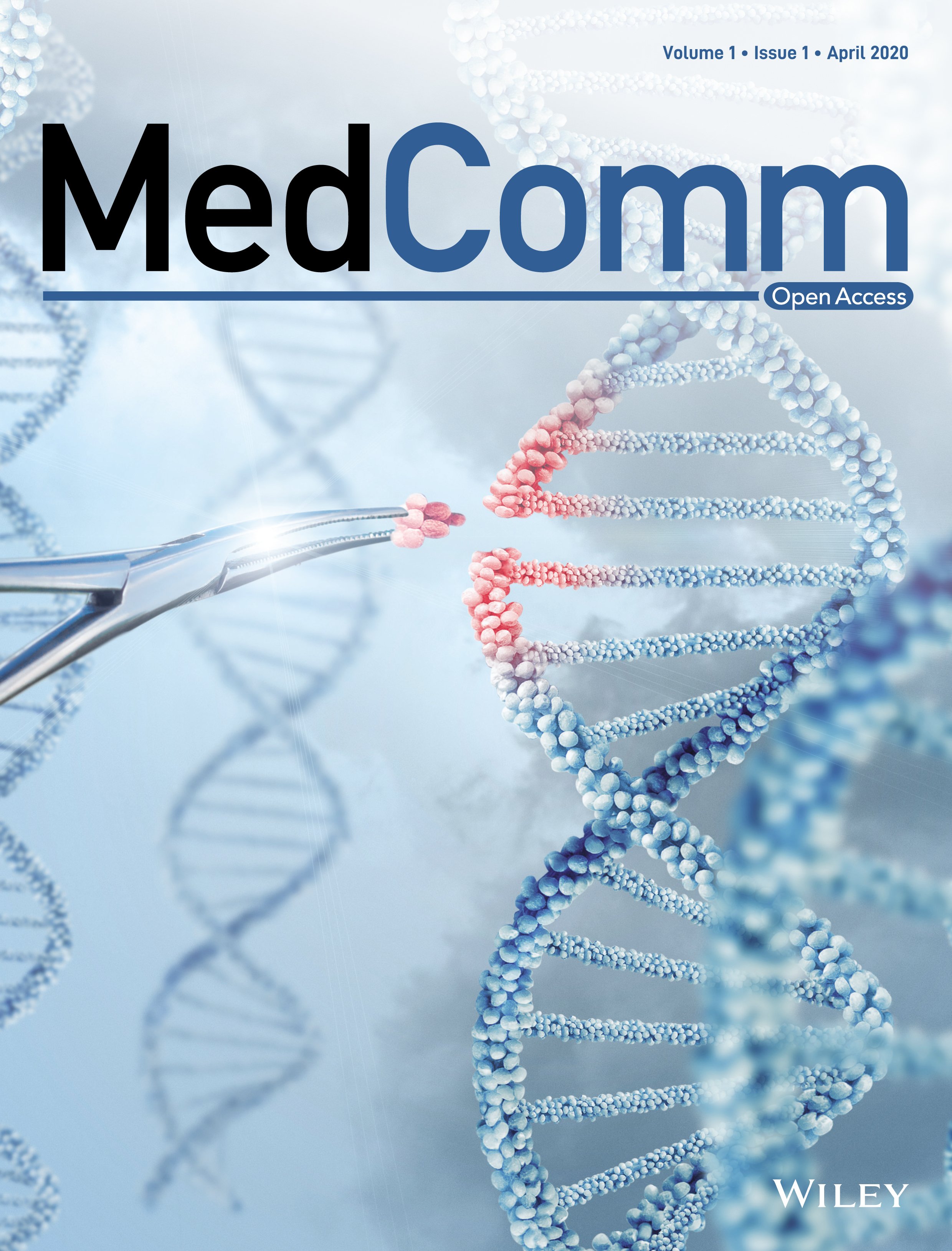Journal list menu
Export Citations
Download PDFs
FEATURED COVER
ISSUE INFORMATION
REVIEWS
Stem cell therapy for COVID-19, ARDS and pulmonary fibrosis
- First Published: 24 October 2020
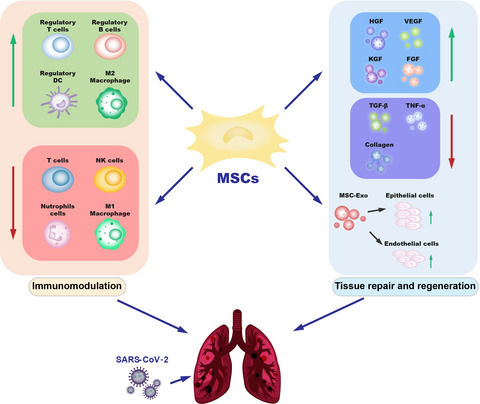
The potential mechanisms of MSCs therapy for COVID-19. MSCs have great therapeutic potential in immunomodulation and tissue repair through secretion of soluble paracrine protein factors and exosomes. MSCs can regulate the functions of a variety of immune cells, secrete several cytokines, promote tissue repair and regeneration, and may play important therapeutic roles in patients with COVID-19. MSCs: mesenchymal stem cells; HGF, hepatocyte growth factor; VEGF, vascular endothelial growth factor; KGF, keratinocyte growth factor; FGF, fibroblast growth factor; TGF-β, transforming growth factor-β; TNF-α, tumor necrosis factor-α; MSC-exo, exosomes.
Generation of universal and hypoimmunogenic human pluripotent stem cells
- First Published: 11 November 2020
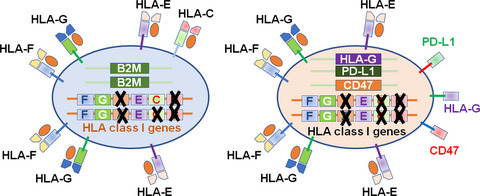
To avoid natural killer (NK) cell and macrophage activities, homozygous human pluripotent stem cells (hPSCs) expressing a single allele of an HLA class Ia molecule, such as HLA-C, were developed (left picture). Major HLA class I molecules were knocked out and PD-L1, HLA-G and CD47 were knocked in hPSCs using CRISPR/Cas9 gene editing (right picture). These cells escaped activation of not only T cells but also NK cells and macrophages, generating universal hPSCs.
LETTERS TO THE EDITOR
First case of COVID-19 infused with hESC derived immunity- and matrix-regulatory cells
- First Published: 26 October 2020
Phase 1 trial for treatment of COVID-19 patients with pulmonary fibrosis using hESC-IMRCs
- First Published: 26 October 2020
Impaired lung regeneration after SARS-CoV-2 infection
- First Published: 20 October 2020
Organoid technology demonstrates effects of potential drugs for COVID-19 on the lung regeneration
- First Published: 19 October 2020
ORIGINAL MANUSCRIPTS
Detection of SARS-CoV-2 in saliva and characterization of oral symptoms in COVID-19 patients
- First Published: 19 October 2020
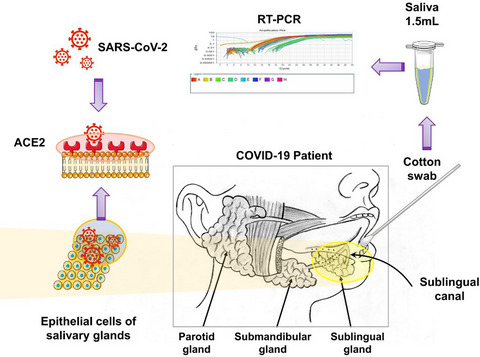
In this study, based on the confirmation of ACE2 receptor expression in salivary glands through database analysis, it was assumed and confirmed that RNA of SARS-COV-2 could be detected in saliva samples. At the same time, we also clinically observed that the initial oral-related symptoms of SARS-COV-2 infection may be amblygeustia and dry mouth.
Single-cell analysis identified lung progenitor cells in COVID-19 patients
- First Published: 22 October 2020
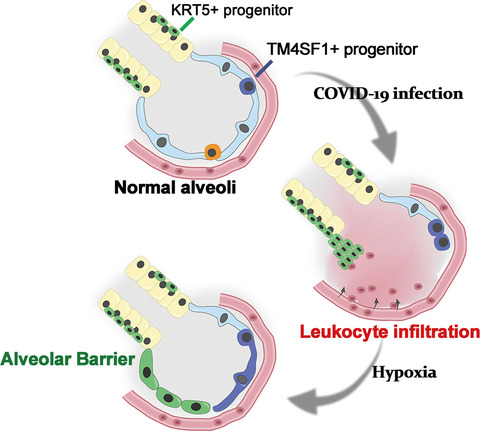
The high mortality of severe 2019 novel coronavirus disease (COVID-19) cases is mainly caused by acute respiratory distress syndrome (ARDS), which is characterized by increased permeability of the alveolar epithelial barriers, pulmonary oedema and consequently inflammatory tissue damage. Some but not all patients showed full functional recovery after the devastating lung damage, and so far there is little knowledge about the lung repair process. Here, by analysing the bronchoalveolar lavage fluid (BALF) of COVID-19 patients through single cell RNA-sequencing (scRNA-Seq), we found that in severe (or critical) cases, there is remarkable expansion of TM4SF1+ and KRT5+ lung progenitor cells. The two distinct populations of progenitor cells could play crucial roles in alveolar cell regeneration and epithelial barrier re-establishment, respectively. In order to understand the function of KRT5+ progenitors in vivo, we transplanted a single KRT5+ cell-derived cell population into damaged mouse lung. Time-course single-cell transcriptomic analysis showed that the transplanted KRT5+ progenitors could long-term engraft into host lung and differentiate into HOPX+ OCLN+ alveolar barrier cell which restored the epithelial barrier and efficiently prevented inflammatory cell infiltration. Similar barrier cells were also identified in some COVID-19 patients with massive leukocyte infiltration. Altogether, this work uncovered the mechanism by which various lung progenitor cells work in concert to prevent and replenish alveoli loss post severe SARS-CoV-2 infection
Safety and feasibility of umbilical cord mesenchymal stem cells in patients with COVID-19 pneumonia: A pilot study
- First Published: 17 November 2020
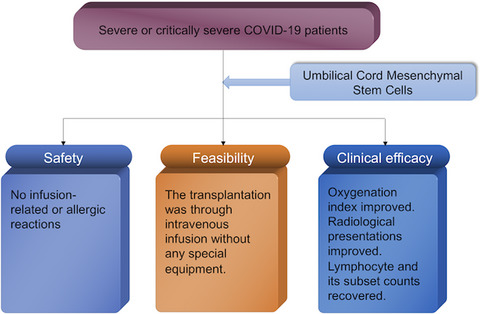
We investigated the safety, feasibility and clinical efficacy of Umbilical Cord Mesenchymal Stem Cells (UC-MSCs) transplantation in severe and critically severe COVID-19 patients. The transplantation of UC-MSCs was safe and feasible. The oxygenation index and radiological presentations were improved. Lymphocyte and its subset counts were recovered.
Network pharmacology and molecular docking analyses on Lianhua Qingwen capsule indicate Akt1 is a potential target to treat and prevent COVID-19
- First Published: 03 November 2020
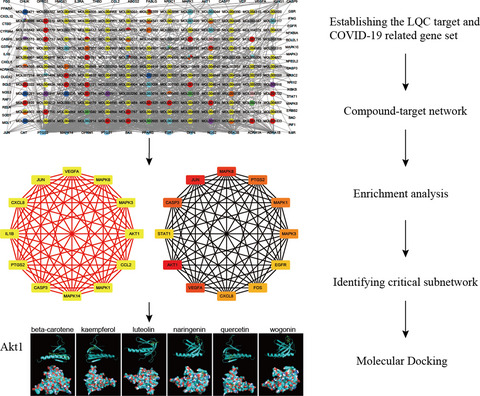
A Lianhua Qingwen capsule (LQC) target and COVID-19 related gene set is established to construct compound-target pharmacology network. Gene ontology and Kyoto Encyclopedia of Genes and Genomes analysis indicate the regulating effect of LQC on apoptosis, antivirus, immune defense, and inflammatory response. Protein-protein interaction network and critical subnetworks are constructed to identify hub gene target. The most significant gene, Akt 1, is selected to perform molecular docking with active compounds of LQC. Six compounds are finally recognized as potential anti-COVID-19 agents.
Clinical analysis of human umbilical cord mesenchymal stem cell allotransplantation in patients with premature ovarian insufficiency
- First Published: 29 October 2020
Hyaluronate supports hESC-cardiomyocyte cell therapy for cardiac regeneration after acute myocardial infarction
- First Published: 27 October 2020
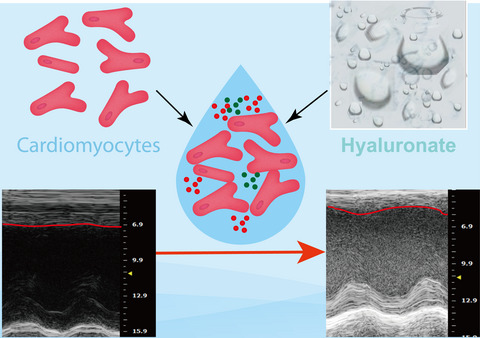
Hyaluronate hydrogels and hESC-CMs displayed tantalizing prospect in improving cardiac function and delaying left ventricular remodelling after acute MI. And it was the hESC-CMs that played a major role in left ventricular contraction and improving cardiac function after acute MI, but the hyaluronate hydrogel played an important supporting role.
STEM CELL STANDARDS
Stem cell ‘therapy’ advertisements in China: Infodemic, regulations and recommendations
- First Published: 04 November 2020




